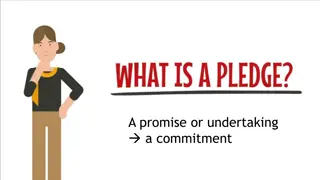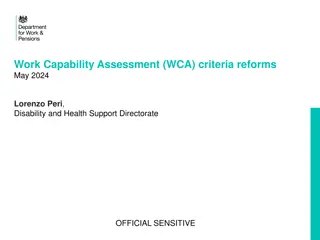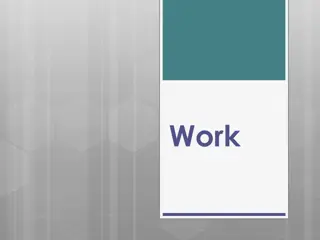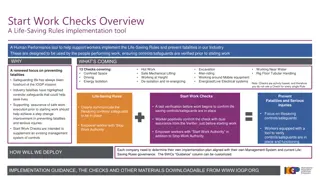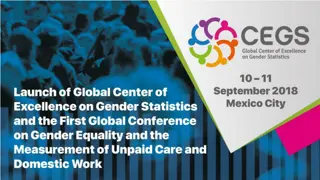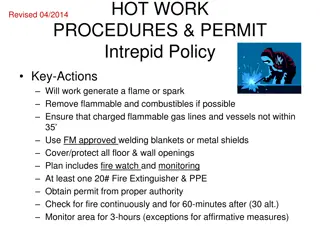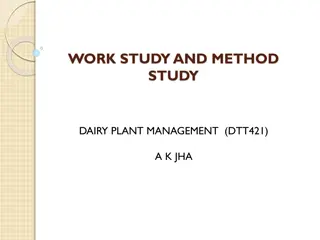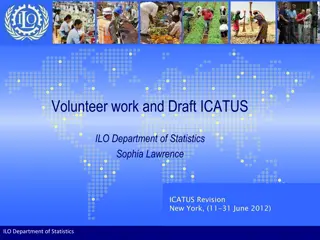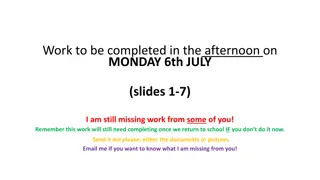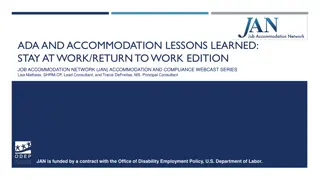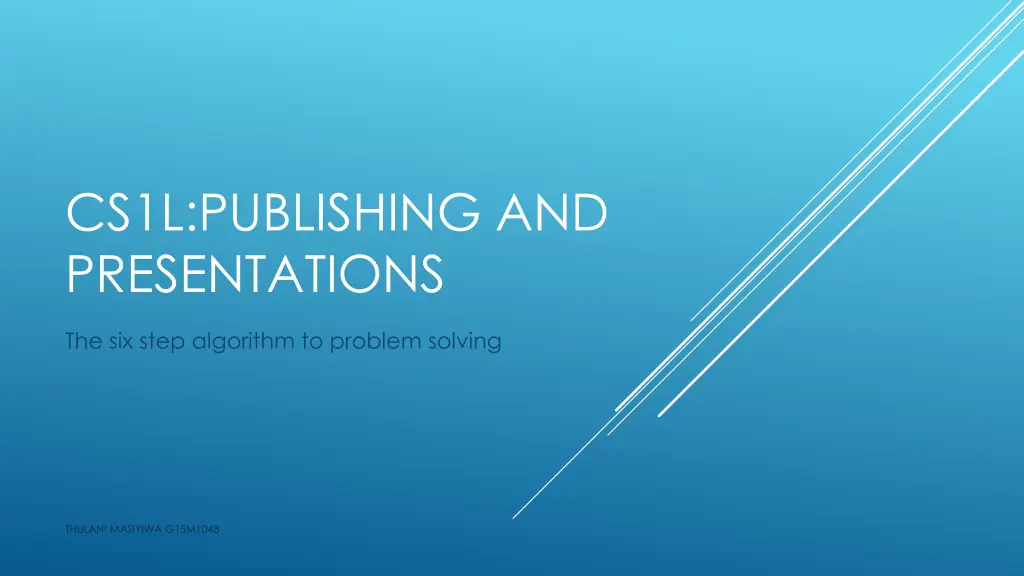
Six-Step Algorithm for Effective Problem Solving
Discover the structured approach to problem-solving with the Six-Step Algorithm by Thulani Masiywa. Learn how to spot, analyze, generate solutions, select and plan the best solution, implement it, and evaluate the outcome for optimal results. Master the art of problem-solving through consensus-building and strategic decision-making.
Download Presentation

Please find below an Image/Link to download the presentation.
The content on the website is provided AS IS for your information and personal use only. It may not be sold, licensed, or shared on other websites without obtaining consent from the author. If you encounter any issues during the download, it is possible that the publisher has removed the file from their server.
You are allowed to download the files provided on this website for personal or commercial use, subject to the condition that they are used lawfully. All files are the property of their respective owners.
The content on the website is provided AS IS for your information and personal use only. It may not be sold, licensed, or shared on other websites without obtaining consent from the author.
E N D
Presentation Transcript
CS1L:PUBLISHING AND PRESENTATIONS The six step algorithm to problem solving THULANI MASIYIWA G15M1048
STEP1:SPOT A PROBLEM The first step is to obviously know what you are dealing with. It may seem like a relatively easy step but it may involve bruising egos and tempering around with emotions. In this stage it is important to not let emotions and egos hinder one s main objective as this stage is a critical stage in this process. The group must come to a consensus on the problem on which they all agree on what the problem is. This is done by discussing until they all agree. If the problem is too large it has to be redefined into a smaller problems which are easier to deal with. A goal is also to be set at this stage. THULANI MASIYIWA G15M1048
STEP2: ANALYSE THE PROBLEM Now that the problem is defined, analyse it to see what is the real bottom line root cause. Once the cause is found, plans can be made to fix it. Try researching the cause of the problem, observe it closely and come to a consensus on why the issue is a problem. THULANI MASIYIWA G15M1048
STEP3: GENERATE POTENTIAL SOLUTIONS Now that the problem has been analysed, the group can begin to develop possible solutions. This is a creative and practical step as all the possible solutions are identified. There are no wrong solutions here as all the group members can contribute and these contributions can be scrutinised later. Each person must clarify their suggestion. THULANI MASIYIWA G15M1048
STEP4: SELECT AND PLAN THE SOLUTION At this stage the best solution is selected from the many suggestions brought up. The solution to be selected must suit the given circumstances, resources and other considerations. The group should prioritize the solutions into what would work the best. The group has to discuss the best solution to come to a consensus on the best solution. The group must do a PDSA (Plan, Do, Study, Act) to have a clear plan of action to track the solution if it needs adjustments. THULANI MASIYIWA G15M1048
STEP5: IMPLEMENT THE SOLUTION This is the do stage of PDSA. The group must make sure that the solution can be tracked to have information to use in the study stage of the PDSA. A scientific approach must be used to track specifically what s going on with the solution. THULANI MASIYIWA G15M1048
STEP6: EVALUATE THE SOLUTION This is the study stage of PDSA to check if the solution actually worked. If it did not, then what went right? What went wrong? What adjustment can the group make to make the solution work better? This is a careful analysis of the best solution the group came up with. After this analysis the group is ready to act upon their findings and the problem must be solved or at least under control. THULANI MASIYIWA G15M1048
1: Identify the problem 6: evaluate the solution 2: analyse the problem 6 step problem solving solution 5: Implement the solution 4: select and plan the solution 3: generate potential solution THULANI MASIYIWA G15M1048



